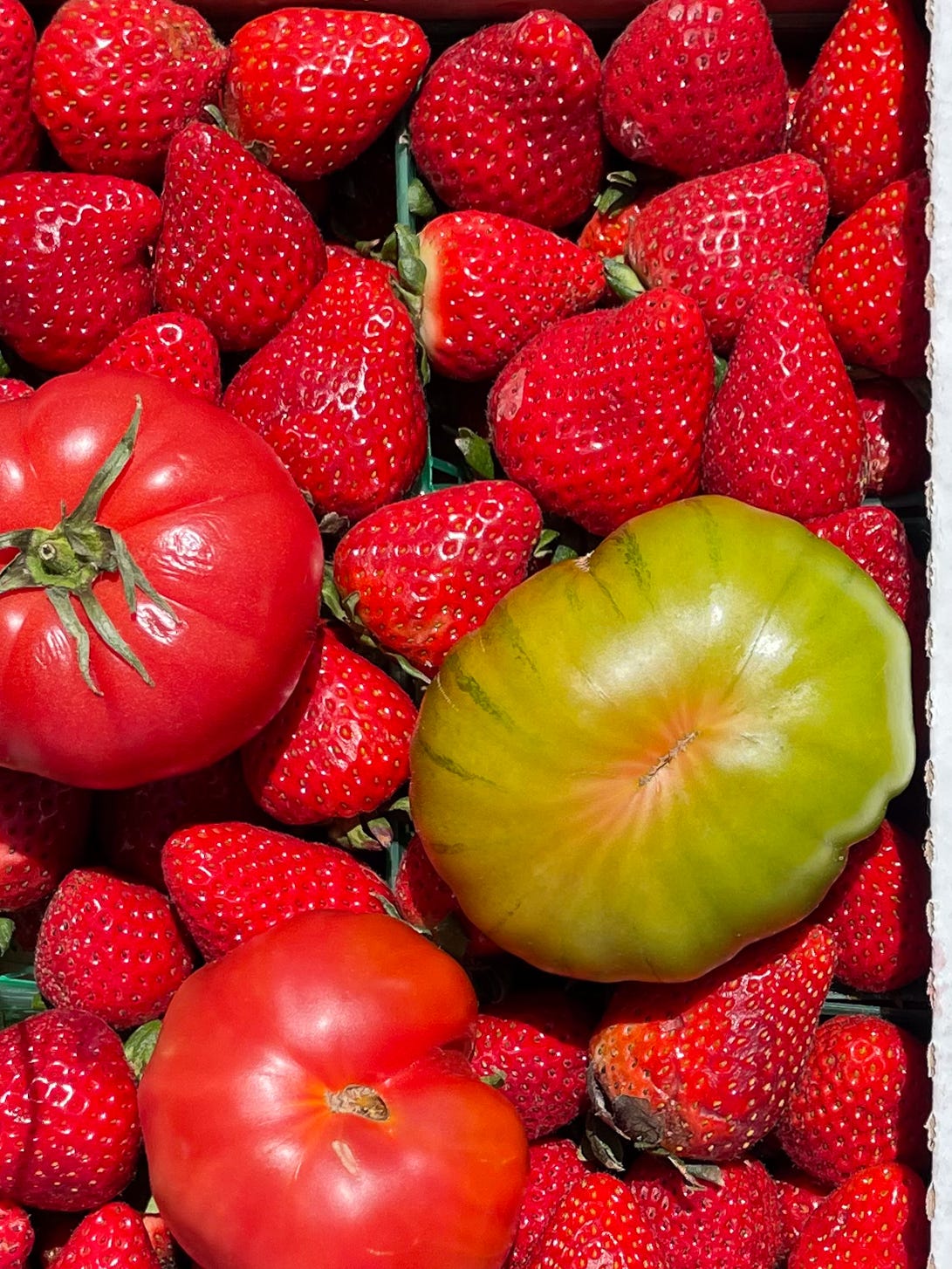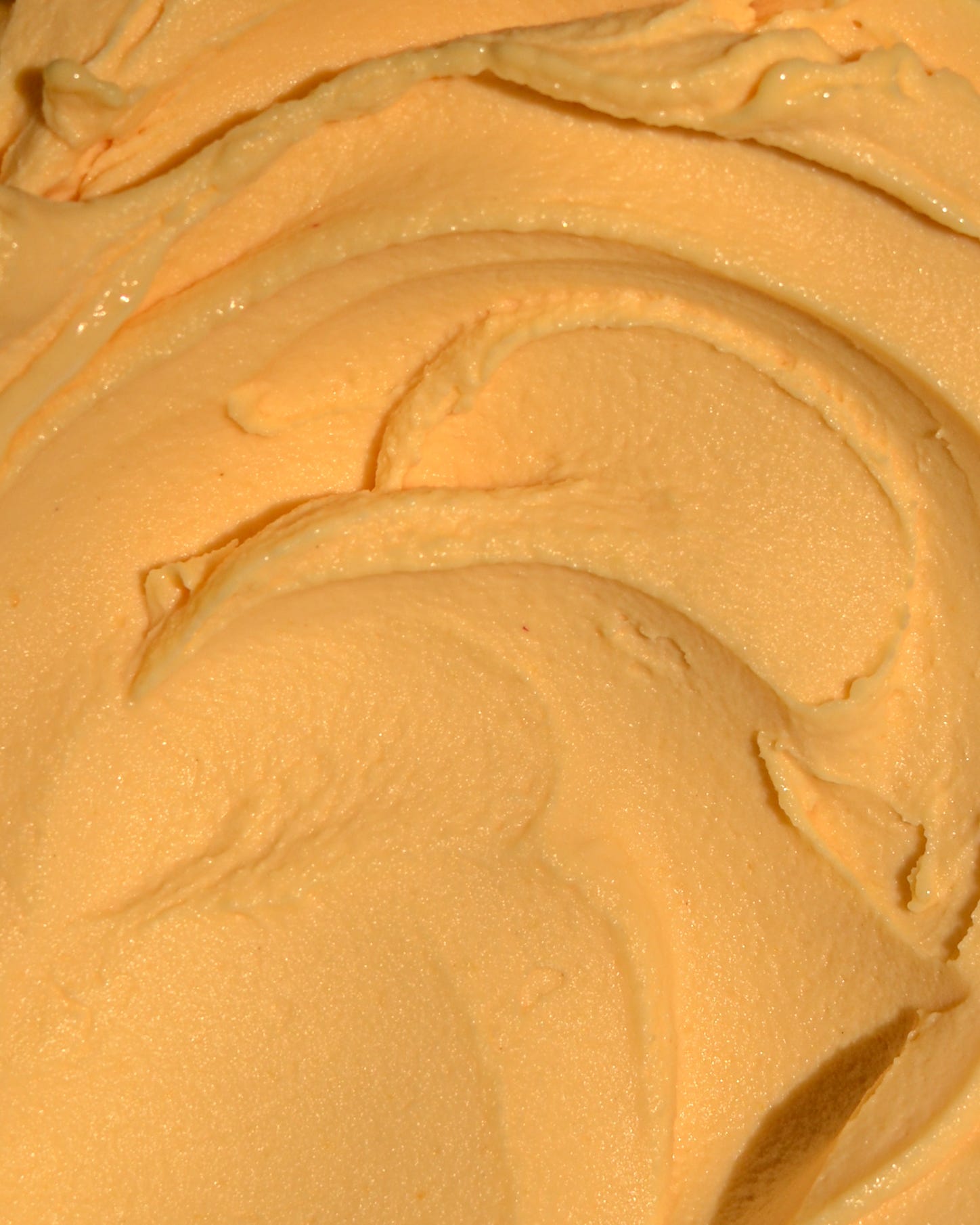I’ll admit: I will never choose a scoop of sorbet over ice cream. But it is absolutely my favorite thing to make. It embodies so much of the magic I find inherent to ice-cream making— respect the delicate balance of liquids, solids, and sugar, and you’ll be rewarded with a vibrant-tasting and -looking scoop.
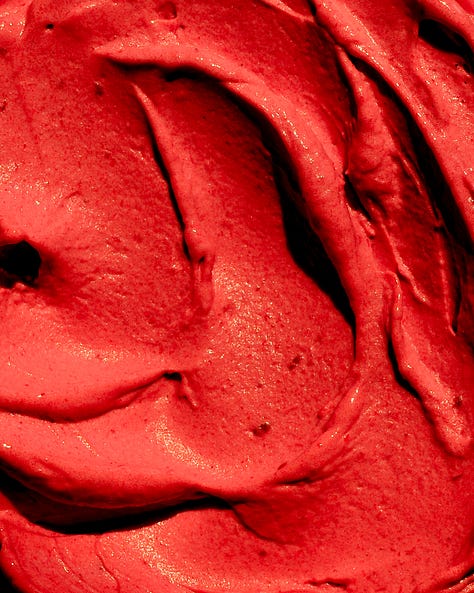

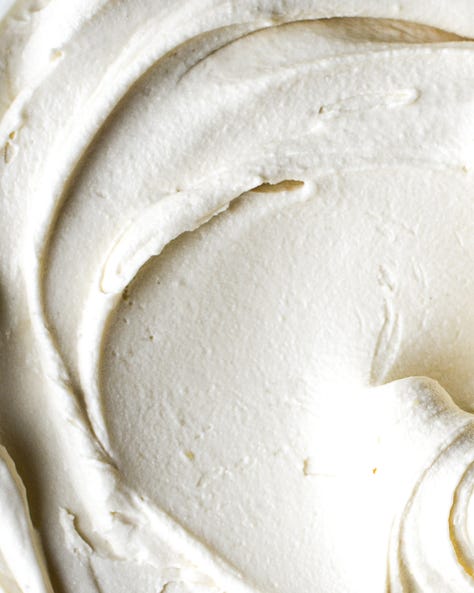
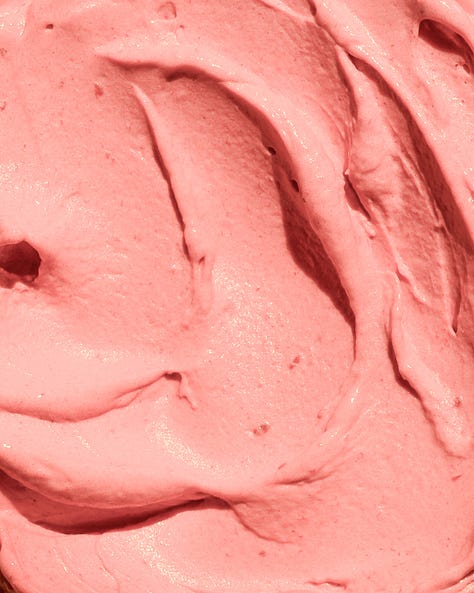


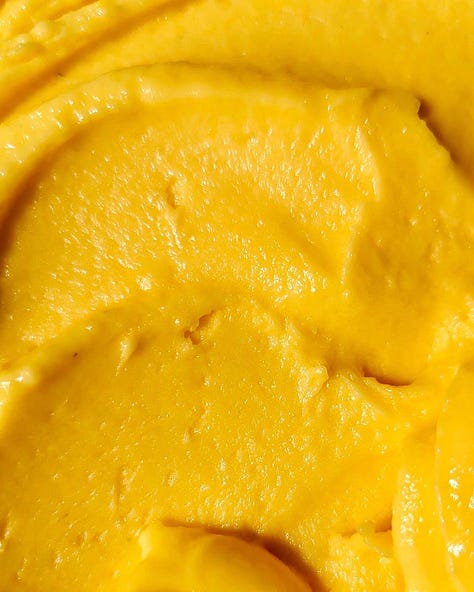
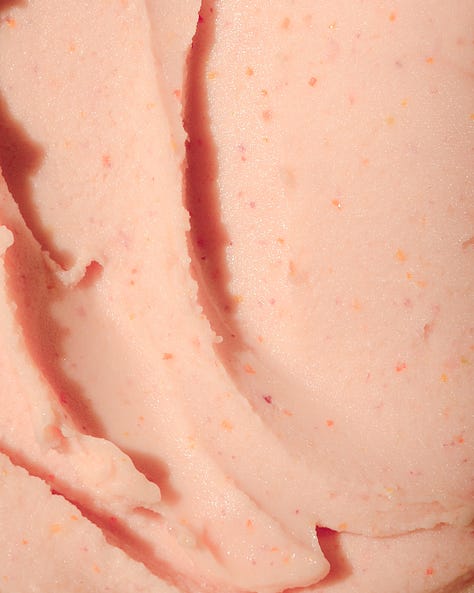
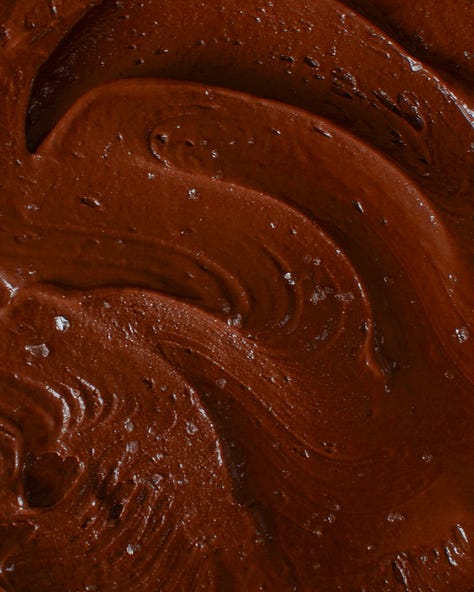
Choose (and trim) your fruit wisely
As preached in last week’s post: let👏your👏ingredients👏do👏the👏heavy👏lifting👏for👏you👏! Excellent outputs can only be had with excellent inputs. There is no amount of sugar or lemon that will make an out-of-season peach taste like an in-season one. And do seek out fruit that’s at its peak (or even sliiiiightly past peak) ripeness for the most nuanced scoop.
Once you’ve gotten your perfectly ripe fruit, wash and dry it gently. Remove any of the inedible bits— thicker peels, green tops, pits— but those and nothing more, nothing less. This is careful, loving work! Put on some good music, get a cute paring knife that brings you joy, slide on some supportive shoes. Sometimes the best, most fragrant bits get lopped off with a careless quarter or trim around a pit.
Now, grab a large-ish container, or better yet, your blender jar. Place that on your scale (you have a scale right???!?!?!!?), tare, and add your trimmed fruit. Note the weight.
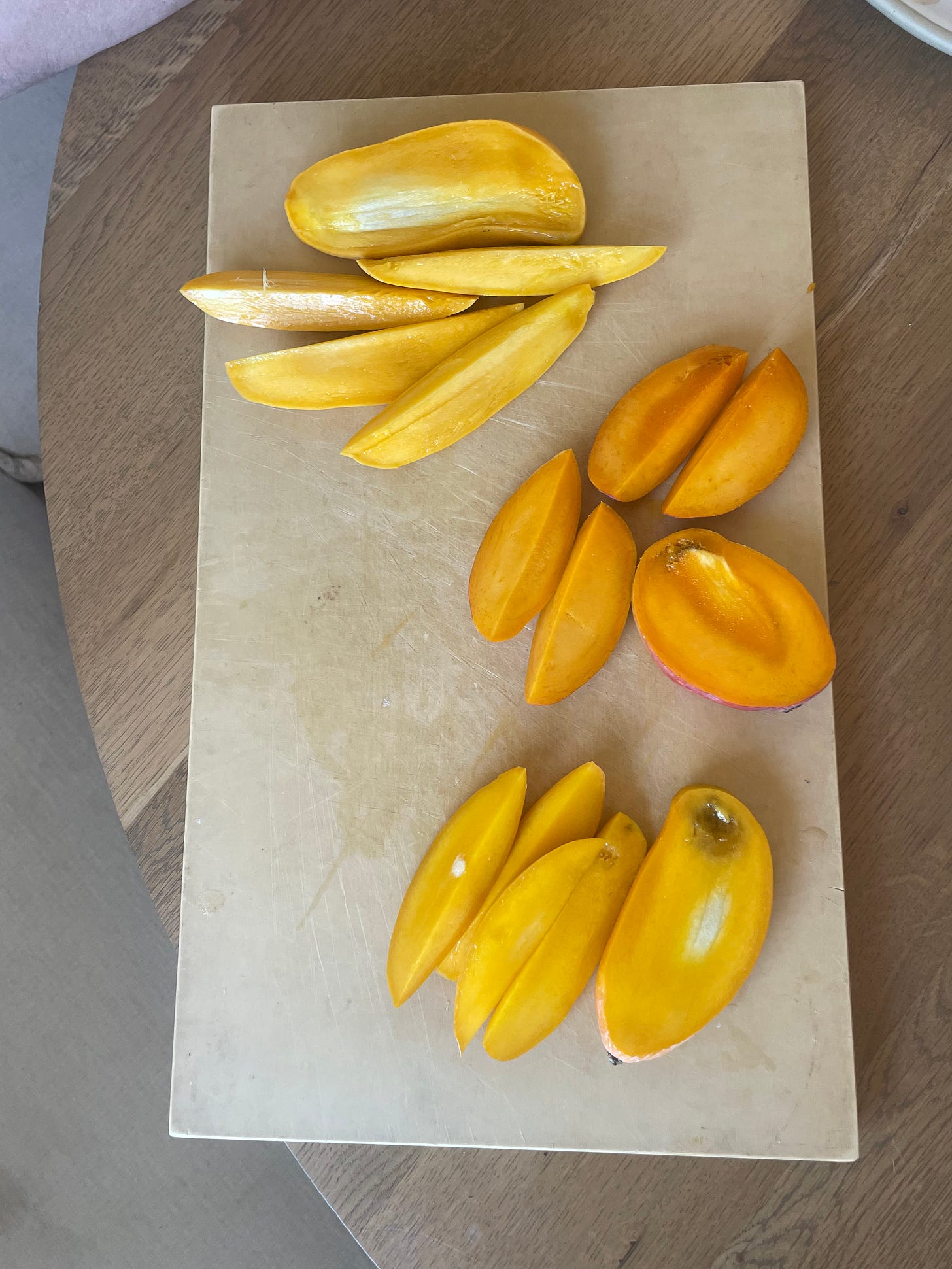
Measuring brix
For sorbets to freeze smooth and creamy, we want the fruit-sugar mixture to contain around 25-30% sugar (or 25-30 brix). Unfortunately, we can’t just take the weight of the fruit, multiple it by 0.25, add that amount of sugar, and call it a day. Fruits all have varying amounts of sugar inherent to them— think strawberry vs watermelon, or even a green mango vs a very ripe mango. Here are some sugar % rules-of-thumb by fruit to serve as a jumping off point (use the lower end if your fruit is nicely ripe and sweet, and the higher end if it has a bit more acid):
Strawberry: 45-50%
Peach/Apricot/Plum: 36-38%
Melons: 16-18%
If you’re working with a fruit that falls outside of these three groups, choose the one that is most similar in sweetness/acid/body profile.
I like to confirm I’ve hit my desired sugar level by using a refractometer. You dab a bit of your base on the plate area, flip the window down to hold the base in place, then peer through the eyehole like a telescope. You’ll be able to see brix markings on the left, and a line indicating how much % sugar your solution is. I got this one years ago, and it’s still serving me well.
Alternatively, you can test if your base is sweet enough by *gasp* TASTING IT! It should taste a little too sweet. I know I’ve hit the mark when I feel it in the back of my eyes and my eyebrows lift. Think like a warm Kool-Aid jammer.
Sugar - what type to use, what format (dry vs syrup), infusions
In the spirit of letting ingredients do the heavy lifting, I exclusively use organic cane sugar for sorbet- and ice cream-making. Unfortunately, we can’t go without sugar at all; it’s thanks to sugar’s anti-freezing properties that we get such creamy, smooth texture, and so, when you can’t beat ‘em, join ‘em! Organic cane sugar, to me at least, has the best flavor while still dissolving easily. I reserve superfine (white) sugar for baking and the larger-crystal turbinado sugar for finishing.
When working with fruits that are especially low in pectin and fiber, like melons and citrus, I’ll replace some of the sugar with corn syrup, which acts like pectin in sorbet, giving the thinner mix better body (like how a frozen banana gives your morning smoothie that great creamy texture).
I’ll use a simple syrup over straight sugar when wanting to dissolve gums (for better emulsion and anti-ice-crystal properties) or infuse flavors (add fresh herbs, dried spices, teas, etc when heating your simple syrup). But for the punchiest, most non-diluted flavor, adjusting your fruit to 25 brix with straight sugar will be your best bet.
Extra credit: To sieve or not to sieve, using gums
If I notice my final sorbet base is a bit fibrous (sometimes fruit like mango can have longer, tougher, more distinct strands of fiber), I’ll pass it through a fine-mesh sieve (it can be really unpleasant to be eating a smooth-seeming scoop, only to have to…chew), but sometimes I’ll leave things like peach skin, tiny strawberry seeds, or passionfruit seeds in, because they’re somewhat integral to the experience of eating these fruit in their natural states (As a flex, you can also run most of the mix through a strainer, then whisk a spoonful of the skin/seeds/etc back in so you get something in between the pulp-free and pulp-ful experience).
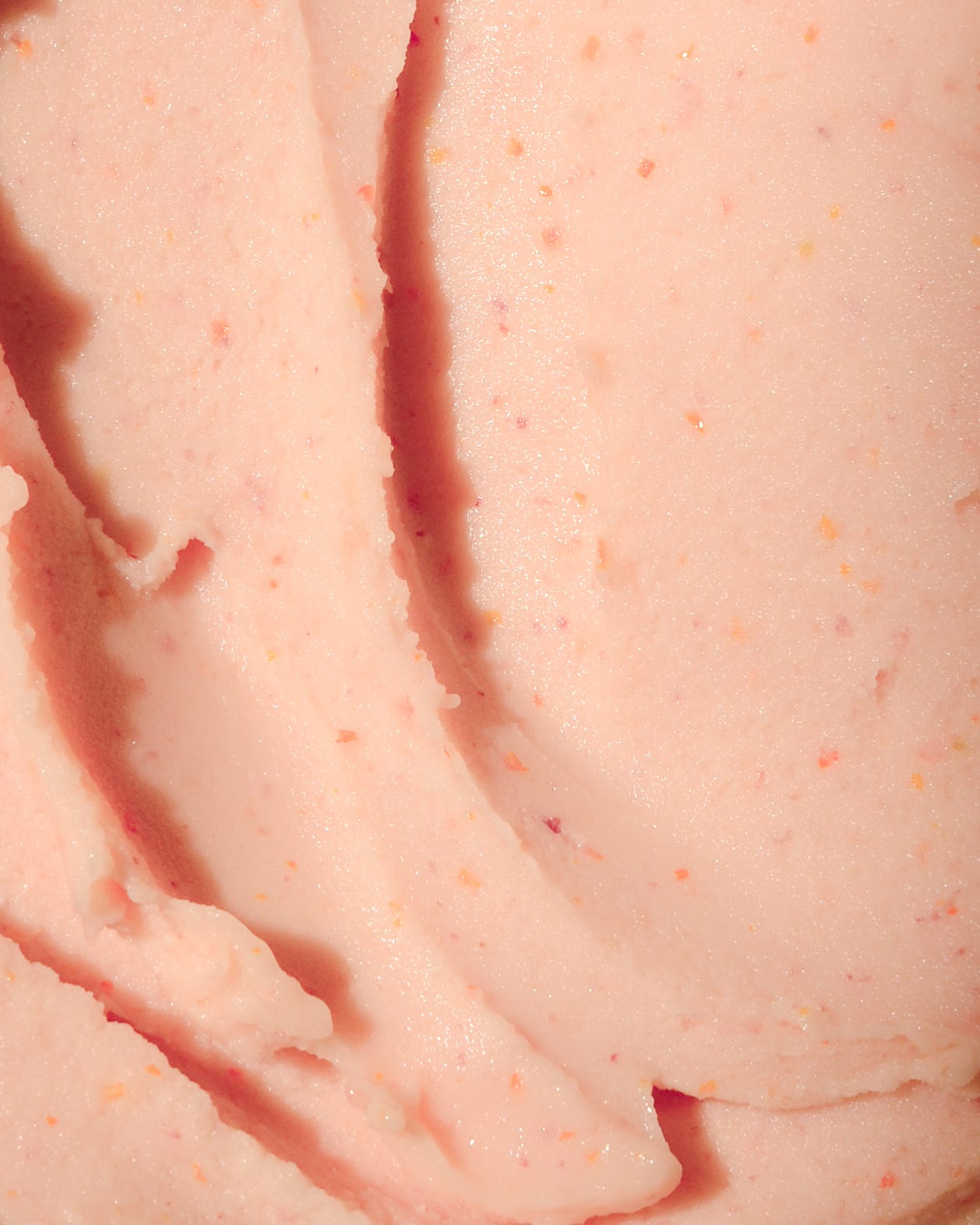
Sorbet made in this way— just fruit + sugar— really tastes best the day it is made, spooned right from the ice cream machine. Sorbet, with all its free water, wants to grow icy and quickly; you can help prevent or slow this down by using corn syrup (gums. Locust bean or xanthan are my preferred gums for flavor and texture reasons, and you really don’t have to use very much— 0.1-0.5% of mix for locust bean, as low as 0.06% of xanthan to notice an improvement in texture and longer-term storage.
Serving suggestions: pairing with a creamy element, cookies, floats/cocktails
Your fruit is your oyster. Because sorbet lacks fat/savory/umami, it loves being paired with something creamy (strawberry sorbet with whipped labneh), crunchy (plum sorbet sandwiched between two pecan sandies), or — wild card— something that would carry its flavor even further (tomato & chile shrub sorbet floating in beer, like a michelada).
Play around with replacing one of the key elements in desserts you know and love with its frozen self. Strawberry shortcakes, but hold the strawberries, and add a strawberry-lemon-vanilla sorbet. Salty-sweet coconut sticky rice with a scoop of mango-lime sorbet. Or the reverse: a hedgehogged mango cheek drenched in lime and topped with a salted coconut sorbet! Have fun with it!
I have a humble request: if you know someone that LOVES or even HATES sorbet — please share this newsletter with them! It’s been so sweet seeing this lil community of Nice Dreamers grow (we hit #55 on Substack’s Rising Food & Drink list last week!), and I hope we keep the momentum going!
Nectarine Basil Sorbet
To close, the recipe for the sorbet that marks the arrival of summer for me, Nectarine Basil. Use yellow nectarines (or peaches) for this one— white peaches/nectarines lack the acidity that make it so juicy.
Yield: around 1L / 2 pints / 8 scoops
160g organic cane sugar
Keep reading with a 7-day free trial
Subscribe to Nice Dream to keep reading this post and get 7 days of free access to the full post archives.



